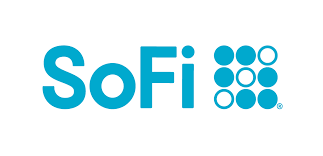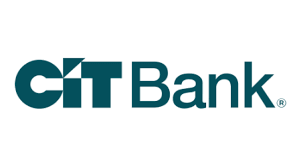Some bank accounts are built for frequent spending, others are designed to help you save, and a few are somewhere in between. Over the years, I've personally had a mix of several of them: checking for bills and everyday spending, high-yield savings for my emergency fund, and a CD or two for long-term goals.
Understanding the different types of bank accounts can help you make smarter choices from the start. I'll break down the main types of bank accounts and how to choose the right combo for your life.
Savings accounts: Where your emergency fund belongs
Savings accounts are designed to help your money grow while staying safe and accessible when you need it. This is the spot for your emergency fund, vacation savings, or money you're setting aside for a near-term goal.
What you'll like:
- You earn interest. Look for high-yield savings accounts with competitive APYs (annual percentage yields).
- FDIC insurance. Your money is protected, just like in a checking account.
What to watch for:
- Withdrawal limits. Some banks still limit how often you can transfer or withdraw from a savings account (typically six times per month), and fees may apply if you go over.
- No direct access. Most savings accounts don't come with a debit card or checks -- expect to transfer money to a checking account before spending.
Use a high-yield savings account for stashing your emergency fund so it's accessible when you need it. They're also a smart place to save for short-term goals or just to earn more interest on money you don't plan to spend right away. I most recently used mine for my home down payment.
This is one of the most powerful changes you can make to your finances. If you're ready to maximize your savings, check out our picks for the best high-yield savings accounts. They pay competitive rates, have minimal fees, and make it easy to watch your money grow with no effort.
Compare savings rates
Make sure you're getting the best account for you by comparing savings rates and promotions. Here are some of our favorite high-yield savings accounts to consider.
| Account | APY | Bonus | Next Steps |
|---|---|---|---|

Open Account for SoFi Checking and Savings
On SoFi's Secure Website.
4.90/5
Our ratings are based on a 5 star scale.
5 stars equals Best.
4 stars equals Excellent.
3 stars equals Good.
2 stars equals Fair.
1 star equals Poor.
We want your money to work harder for you. Which is why our ratings are biased toward offers that deliver versatility while cutting out-of-pocket costs.
|
up to 4.00%
Rate info
Earn up to 4.00% Annual Percentage Yield (APY) on SoFi Savings with a 0.70% APY Boost (added to the 3.30% APY as of 12/23/25) for up to 6 months. Open a new SoFi Checking and Savings account and pay the $10 SoFi Plus subscription every 30 days OR receive eligible direct deposits OR qualifying deposits of $5,000 every 31 days by 1/31/26. Rates variable, subject to change. Terms apply at sofi.com/banking#2. SoFi Bank, N.A. Member FDIC.
Min. to earn: $0
|
Earn up to $300 and +0.70% Boost on Savings APY with direct deposit. Terms apply.
Earn up to 4.00% Annual Percentage Yield (APY) on SoFi Savings with a 0.70% APY Boost (added to the 3.30% APY as of 12/23/25) for up to 6 months. Open a new SoFi Checking and Savings account and pay the $10 SoFi Plus subscription every 30 days OR receive eligible direct deposits OR qualifying deposits of $5,000 every 31 days by 1/31/26. Rates variable, subject to change. Terms apply at sofi.com/banking#2. SoFi Bank, N.A. Member FDIC. |
Open Account for SoFi Checking and Savings
On SoFi's Secure Website. |

Open Account for CIT Platinum Savings
On CIT's Secure Website.
4.60/5
Our ratings are based on a 5 star scale.
5 stars equals Best.
4 stars equals Excellent.
3 stars equals Good.
2 stars equals Fair.
1 star equals Poor.
We want your money to work harder for you. Which is why our ratings are biased toward offers that deliver versatility while cutting out-of-pocket costs.
|
3.75%
Rate info
3.75% APY for balances of $5,000 or more; otherwise, 0.25% APY
Min. to earn: $5,000
|
Earn a bonus of up to $300 after a one-time deposit of $25,000+
This limited-time offer to qualify for a $225 cash bonus with a minimum deposit of $25,000 or a $300 bonus with a minimum deposit of $50,000 is available to New and Existing Customers who meet the Platinum Savings promotion criteria. The Promotion begins on September 23, 2025, and can end at any time without notice. Customers will receive a $225 or a $300 bonus provided that the program requirements are met. Click here to see promotion details and terms: https://www.cit.com/cit-bank/platinum-savings/PS2025 |
Open Account for CIT Platinum Savings
On CIT's Secure Website. |

Open Account for Western Alliance Bank High-Yield Savings Premier
On Western Alliance Bank's Secure Website.
4.40/5
Our ratings are based on a 5 star scale.
5 stars equals Best.
4 stars equals Excellent.
3 stars equals Good.
2 stars equals Fair.
1 star equals Poor.
We want your money to work harder for you. Which is why our ratings are biased toward offers that deliver versatility while cutting out-of-pocket costs.
|
3.90%
Rate info
The annual percentage yield (APY) is accurate as of December 2, 2025 and subject to change at the Bank’s discretion. Refer to product’s website for latest APY rate. Minimum deposit required to open an account is $500 and a minimum balance of $0.01 is required to earn the advertised APY.
Min. to earn: $500 to open, $0.01 for max APY
|
N/A
|
Open Account for Western Alliance Bank High-Yield Savings Premier
On Western Alliance Bank's Secure Website. |
Platinum Savings is a tiered interest rate account. Interest is paid on the entire account balance based on the interest rate and APY in effect that day for the balance tier associated with the end-of day account balance. *APYs — Annual Percentage Yields are accurate as of November 20, 2025: 0.25% APY on balances of $0.01 to $4,999.99; 3.75% APY on balances of $5,000.00 or more. Interest Rates for the Platinum Savings account are variable and may change at any time without notice. The minimum to open a Platinum Savings account is $100.
Based on comparison to the national average Annual Percentage Yield (APY) on savings accounts as published in the FDIC National Rates and Rate Caps, accurate as of December 15, 2025.
For complete list of account details and fees, see our Personal Account disclosures.
The annual percentage yield (APY) is accurate as of December 2, 2025 and subject to change at the Bank’s discretion. Refer to product’s website for latest APY rate. Minimum deposit required to open an account is $500 and a minimum balance of $0.01 is required to earn the advertised APY.
Accurate as of the time of publication. The national average rate referenced is from the FDIC’s published National Rates and Rate Caps for Savings deposit products, accurate as of November 17, 2025. See the FDIC website for more information.
Checking accounts: Your go-to for everyday spending
A checking account is the workhorse of your finances. It's built for day-to-day transactions like paying bills, using a debit card, and transferring money.
What you'll like:
- Easy access to your money. Most checking accounts come with a debit card, ATM access, and mobile transfers.
- No limits on withdrawals. You can spend and move your money as often as you need.
- FDIC insurance. Like all deposit accounts, checking accounts are typically insured up to $250,000 per depositor.
What to watch for:
- You might not earn interest. Some checking accounts pay interest, but rates are usually lower than savings-focused accounts.
- Fees can sneak in. Monthly maintenance fees, overdraft charges, and out-of-network ATM fees are common, but avoidable if you choose carefully.
This is basically where your money flows in and out of. You don't want to let a lot of savings sit in there earning nothing. Keep this to the basics.
Money market accounts: A hybrid option
Money market accounts blend features from both checking and savings. You'll typically earn interest like you would with a savings account, but you might also get check-writing privileges or a debit card.
What you'll like:
- Competitive interest rates. Some money market accounts offer APYs that rival high-yield savings accounts.
- More access than savings accounts. Limited debit card or check access can be handy in a pinch.
What to watch for:
- Higher minimums. You might need to deposit a few hundred or even a few thousand dollars to open or maintain one.
- Possible withdrawal limits. Like savings accounts, some banks cap your monthly withdrawals.
Money market accounts are good for people who want to earn interest and still have occasional access to their money without the hassle of transferring funds between accounts.
Certificates of deposit (CDs): For money you don't need anytime soon
CDs lock your money away for a set period -- typically 6 months to 5 years -- in exchange for a guaranteed interest rate. The longer the term, the higher the potential return.
What you'll like:
- High APYS. CDs typically offer APYs that are competitive with some of the top high-yield savings account rates.
- Locked-in rate. Your return is guaranteed, regardless of market fluctuations.
What to watch for:
- No early withdrawals. Pull your money out before the term ends and you'll face a penalty.
- Limited flexibility. Once you deposit money into a CD, it's pretty much hands off.
CDs are ideal for savings you won't need to touch for a while, like a wedding fund. I used mine for money I was stashing away to furnish my house whenever I pulled the trigger on buying one. I didn't know exactly when I'd need it, but I knew it wouldn't be in the next six months.
So, which type of bank account should you choose?
Now you're ready to choose a bank. Start by asking yourself:
- How often will I need to withdraw money?
- Do I want to earn interest or prioritize access?
- Am I okay locking up some of my money for a while?
There's no one-size-fits-all answer, and you don't have to choose just one. I typically have two to three of these at any given time. You might:
- Use a checking account for your direct deposit and daily spending
- Open a high-yield savings account or money market account for your emergency fund
- Try a CD to earn more on extra cash you won't need soon
The best combo depends on your goals, your habits, and how hands-on you want to be with your money.
If you want to make the biggest change starting now, I'd recommend starting with a high-yield savings account. Going from 0.01% to up to 4.00% APY is a game changer for your savings. Take a look at our top high-yield savings account picks and start letting your money do the hard work today.
FAQs
-
If you're just getting started, a checking account (for spending) and a savings account (for saving) are a solid foundation. Add other accounts as your goals grow.
-
Checking accounts are made for frequent transactions; savings accounts are designed to hold your money and earn interest over time.
-
Absolutely. Many people use different accounts for different purposes -- just keep track of fees, minimums, and logins.